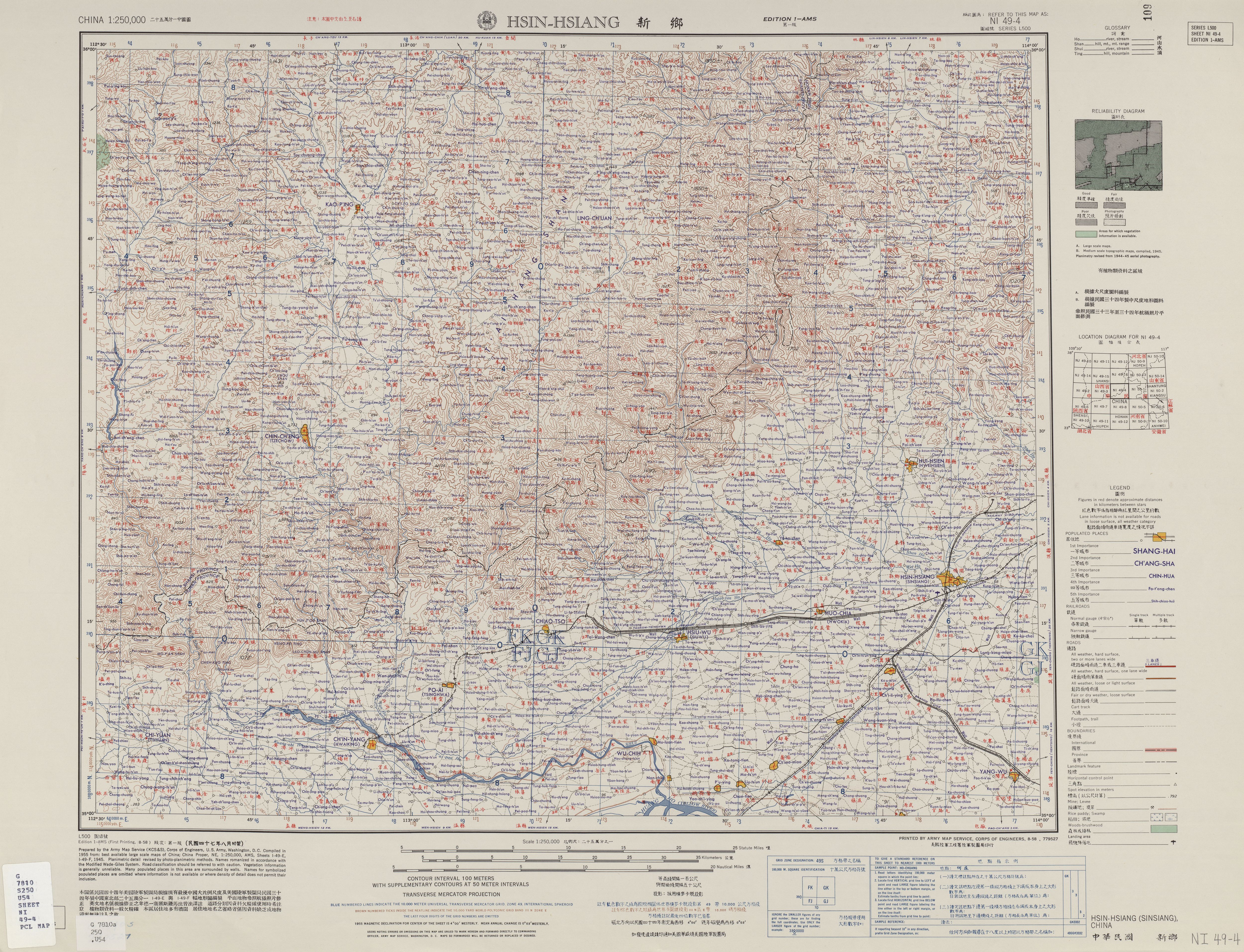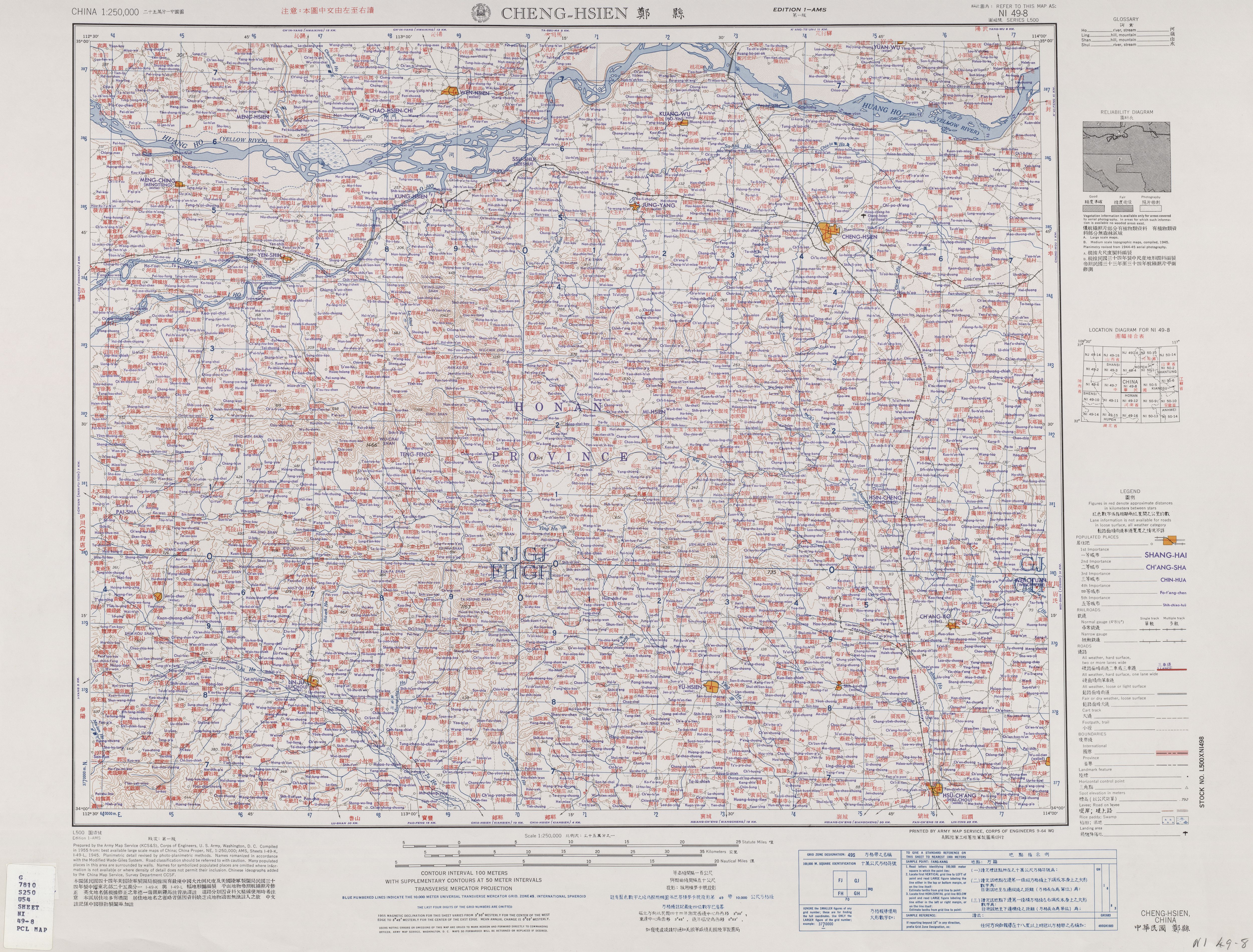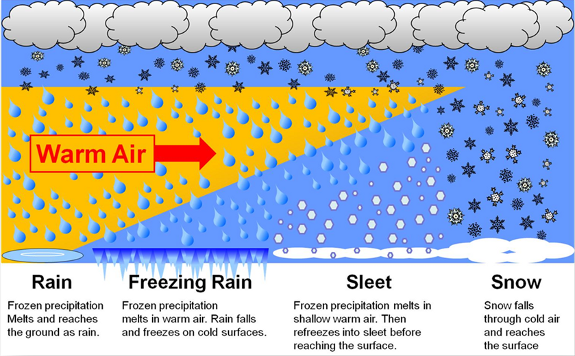|
2021 Henan Floods
China's Henan Province experienced flooding between 17 and 31 July 2021 as a result of heavy rainfall. On July 20, Zhengzhou, the provincial capital, recorded of rainfall within an hour, the highest ever figure recorded since measurements began in 1951. On 2 August 2021, provincial authorities reported 302 deaths (292 in Zhengzhou), and over 50 missing people. Later, investigations revealed that provincial officials had deliberately underreported the deaths, bring the new death toll to 398. The floods caused the evacuation of 815,000 people, and affected 14.5 million people around the province. The intensity of the floods was believed to have been amplified by extreme weather caused by climate change. Meteorological synopsis Several factors were attributed to the unusual and severe floods in Henan. The subtropical high (system of high atmospheric pressure) in the western Pacific as well as the continental high-pressure area in the Sea of Japan and inland Northwest China cont ... [...More Info...] [...Related Items...] OR: [Wikipedia] [Google] [Baidu] |
Zhengzhou
Zhengzhou (; ), also spelt Zheng Zhou and alternatively romanized as Chengchow, is the capital and largest city of Henan Province in the central part of the People's Republic of China. Located in north-central Henan, it is one of the National Central Cities in China, the centre of Central Plains area, and serves as the political, economic, technological, and educational center of the province. The Zhengzhou metropolitan area (including Zhengzhou and Kaifeng) is the core area of the Central Plains Economic Zone. The city lies on the southern bank of the Yellow River. Zhengzhou is a major hub of China's national transportation network, with railways connecting Zhengzhou to Europe and an international airport. Zhengzhou is a and a State-list Famous Historical and Culture City. As of 2020, there are two World Cultural Heritage Sites in Zhengzhou. The Zhengzhou Commodity Exchange (ZCE) is China's first futures exchange. Zhengzhou Airport Economy Zone is China's first Airport E ... [...More Info...] [...Related Items...] OR: [Wikipedia] [Google] [Baidu] |
Northwest China
Northwest China () is a statistical region of China which includes the autonomous regions of Xinjiang and Ningxia and the provinces of Shaanxi, Gansu and Qinghai. It has an area of 3,107,900 km2. The region is characterized by a (semi-)arid continental climate. It has a diverse population including significant minorities such as Hui, Uyghurs and Tibetans. Culturally, the region has historically been influenced by the Silk Road. Administrative divisions Cities with urban area over one million in population Outer Northwest China Outer Northwest China () refers to the portions of territories of the Qing dynasty that were later annexed by the Russian Empire through the Convention of Peking, Treaty of Tarbagatai, Treaty of Saint Petersburg (1881) and other unequal treaties referred by Chinese interpretation. During Qing rule, the territories formed parts of far-western Xinjiang and far-northwestern Outer Mongolia. Tuva, at the time a part of the larger Tannu Uriankhai region ... [...More Info...] [...Related Items...] OR: [Wikipedia] [Google] [Baidu] |
Xinxiang
Xinxiang ( ; postal: Sinsiang) is a prefecture-level city in northern Henan province, China. It borders the provincial capital of Zhengzhou to its southwest, Kaifeng to its southeast, Hebi and Anyang to its north, Jiaozuo to its west, and the provinces of Shanxi and Shandong to its northwest and east respectively. Its total population was 6,251,929 as of the 2020 Chinese Census. As of the 2018 estimation, 2,743,200 lived in the built-up (or metro) area made of 4 urban districts ('' Weibin, Hongqi, Muye, Fenquan''), Yanjin county, Xinxiang county and Huixian City which are now being conurbated as the city is expanding very quickly. History Xinxiang was site of the Battle of Muye where the Shang Dynasty was overthrown by the Zhou. Xinxiang dates from the Sui dynasty (581-618) and was a small market center before being developed as an industrial center in the 1950s. It also served as the capital of the short-lived Pingyuan Province, which covered neighbouring cities -Anyang, ... [...More Info...] [...Related Items...] OR: [Wikipedia] [Google] [Baidu] |
Zhengzhou Metro
Zhengzhou Metro () is a rapid transit rail network serving urban and suburban districts of Zhengzhou, the capital city of Henan province. It is operated by the state owned Zhengzhou Metro Group. As of June 2022, the network has 7 operational lines, with a Network length (transport), network length of and 151 stations. Opened on 28 December 2013, it is the first metro system in Henan province, and 18th in mainland China. History "Project 7401" The history of the metro network in Zhengzhou dates back to 1974, when the first metro project in Zhengzhou was planned. It was called as the "Project 7401", since it was the first project approved by the CPC Henan Provincial Committee in 1974. The project was designed for both civilian and military use, as a single track metro line in peacetime, and could be used for civil defense during war. The first phase was planned to start at Huayuan Road (near Zijingshan), then move westward via Erqi Square, and ends at the Cable Factory on Funiu ... [...More Info...] [...Related Items...] OR: [Wikipedia] [Google] [Baidu] |
Zhengzhou Streets During The Flood 2021-07-20
Zhengzhou (; ), also spelt Zheng Zhou and Chinese postal romanization, alternatively romanized as Chengchow, is the Capital (political), capital and largest city of Henan, Henan Province in the Central China, central part of the China, People's Republic of China. Located in north-central Henan, it is one of the National Central City, National Central Cities in China, the centre of Central Plain (China), Central Plains area, and serves as the political, economic, technological, and educational center of the province. The Zhengzhou metropolitan area (including Zhengzhou and Kaifeng) is the core area of the Central Plains Economic Zone. The city lies on the southern bank of the Yellow River. Zhengzhou is a major hub of China's national transportation network, with railways connecting Zhengzhou to Europe and an international airport. Zhengzhou is a and a List of National Famous Historical and Cultural Cities in China, State-list Famous Historical and Culture City. As of 2020, there ... [...More Info...] [...Related Items...] OR: [Wikipedia] [Google] [Baidu] |
Henan Floods 2021-07-20 CNS
Henan (; or ; ; alternatively Honan) is a landlocked province of China, in the central part of the country. Henan is often referred to as Zhongyuan or Zhongzhou (), which literally means "central plain" or "midland", although the name is also applied to the entirety of China proper. Henan is a birthplace of Han Chinese civilization, with over 3,200 years of recorded history and remained China's cultural, economic and political center until approximately 1,000 years ago. Henan Province is home to many heritage sites, including the ruins of Shang dynasty capital city Yin and the Shaolin Temple. Four of the Eight Great Ancient Capitals of China, Luoyang, Anyang, Kaifeng and Zhengzhou, are in Henan. The practice of tai chi also began here in Chen Jia Gou Village (Chen style), as did the later Yang and Wu styles. Although the name of the province () means "south of the ellowriver.", approximately a quarter of the province lies north of the Yellow River, also known as the H ... [...More Info...] [...Related Items...] OR: [Wikipedia] [Google] [Baidu] |
Train From Xingtai To Zhengzhou After The Flood 2021-07-21
In rail transport, a train (from Old French , from Latin , "to pull, to draw") is a series of connected vehicles that run along a railway track and Passenger train, transport people or Rail freight transport, freight. Trains are typically pulled or pushed by locomotives (often known simply as "engines"), though some are self-propelled, such as multiple units. Passengers and cargo are carried in railroad cars, also known as wagons. Trains are designed to a certain Track gauge, gauge, or distance between rails. Most trains operate on steel tracks with steel wheels, the low friction of which makes them more efficient than other forms of transport. Trains have their roots in wagonways, which used railway tracks and were Horsecar, powered by horses or Cable railway, pulled by cables. Following the invention of the steam locomotive in the United Kingdom in 1804, trains rapidly spread around the world, allowing freight and passengers to move over land faster and cheaper than ever pos ... [...More Info...] [...Related Items...] OR: [Wikipedia] [Google] [Baidu] |
Waterlogging (agriculture)
Waterlogging water is the saturation of soil with water. Soil may be regarded as waterlogged when it is nearly saturated with water much of the time such that its air phase is restricted and anaerobic conditions prevail. In extreme cases of prolonged waterlogging, anaerobiosis occurs, the roots of mesophytes suffer, and the subsurface reducing atmosphere leads to such processes as denitrification, methanogenesis, and the reduction of iron and manganese oxides. All plants, including crops require air (specifically, oxygen) to respire, produce energy and keep their cells alive. In agriculture, waterlogging of the soil typically blocks air from getting in to the roots. With the exception of rice (''Oryza sativa''), most crops like maize and potato, are therefore highly intolerant to waterlogging. Plant cells use a variety of signals such the oxygen concentration, plant hormones like ethylene, energy and sugar status to acclimate to waterlogging-induced oxygen deprivation. In ... [...More Info...] [...Related Items...] OR: [Wikipedia] [Google] [Baidu] |
Aqua (satellite)
Aqua (EOS PM-1) is a NASA scientific research satellite in orbit around the Earth, studying the precipitation, evaporation, and cycling of water. It is the second major component of the Earth Observing System (EOS) preceded by Terra (launched 1999) and followed by Aura (launched 2004). The name "Aqua" comes from the Latin word for water. The satellite was launched from Vandenberg Air Force Base on May 4, 2002, aboard a Delta II rocket. Aqua operated in a sun-synchronous orbit as the third in the satellite formation called the " A Train" with several other satellites (OCO-2, the Japanese GCOM W1, PARASOL, CALIPSO, CloudSat, and Aura) for most of its first 20 years; but in January 2022 Aqua left the A-Train (as CloudSat, CALIPSO and PARASOL had already done) when, due to its fuel limitations, it transitioned to a free-drift mode, wherein its equatorial crossing time is slowly drifting to later times, from its tightly controlled orbit. Mission Aqua is one of NASA's missions for ... [...More Info...] [...Related Items...] OR: [Wikipedia] [Google] [Baidu] |
Relief Rain
In meteorology, the different types of precipitation often include the character, formation, or phase of the precipitation which is falling to ground level. There are three distinct ways that precipitation can occur. Convective precipitation is generally more intense, and of shorter duration, than stratiform precipitation. Orographic precipitation occurs when moist air is forced upwards over rising terrain and condenses on the slope, such as a mountain. Precipitation can fall in either liquid or solid phases, is mixed with both, or transition between them at the freezing level. Liquid forms of precipitation include rain and drizzle and dew. Rain or drizzle which freezes on contact with a surface within a subfreezing air mass gains the preceding adjective "freezing", becoming the known freezing rain or freezing drizzle. Slush is a mixture of both liquid and solid precipitation. Frozen forms of precipitation include snow, ice crystals, ice pellets (sleet), hail, and graupel. Their r ... [...More Info...] [...Related Items...] OR: [Wikipedia] [Google] [Baidu] |
Taihang Mountains
The Taihang Mountains () are a Chinese mountain range running down the eastern edge of the Loess Plateau in Shanxi, Henan and Hebei provinces. The range extends over from north to south and has an average elevation of . The principal peak is Mount Xiaowutai (). The Taihang's eastern peak is Mount Cangyan in Hebei; Baishi Mountain forms its northern tip. The Taihang Mountains were formed during the Jurassic. Brown forest and cinnamon soils are found here. The name of Shanxi Province, meaning "west of the mountains", derives from its location west of the Taihang Mountains. The name of Shandong Province (east of the mountains) originally applied to the area east of the Xiao Mountains, but by the Tang dynasty it refers to the area east of the Taihang Mountains; this entity evolved into the modern-day Shandong Province, though the actual border of the province has moved considerably to the east. The Hai River system runs through the Taihang Mountains. The Red Flag Canal is loc ... [...More Info...] [...Related Items...] OR: [Wikipedia] [Google] [Baidu] |
Horse Latitudes
The horse latitudes are the latitudes about 30 degrees north and south of the Equator. They are characterized by sunny skies, calm winds, and very little precipitation. They are also known as subtropical ridges, or highs. It is a high-pressure area at the divergence of trade winds and the westerlies. Origin of the term A likely and documented explanation is that the term is derived from the "dead horse" ritual of seamen (see Beating a dead horse). In this practice, the seaman paraded a straw-stuffed effigy of a horse around the deck before throwing it overboard. Seamen were paid partly in advance before a long voyage, and they frequently spent their pay all at once, resulting in a period of time without income. If they got advances from the ship's paymaster, they would incur debt. This period was called the "dead horse" time, and it usually lasted a month or two. The seaman's ceremony was to celebrate having worked off the "dead horse" debt. As west-bound shipping from Europ ... [...More Info...] [...Related Items...] OR: [Wikipedia] [Google] [Baidu] |



.png)


.jpg)

